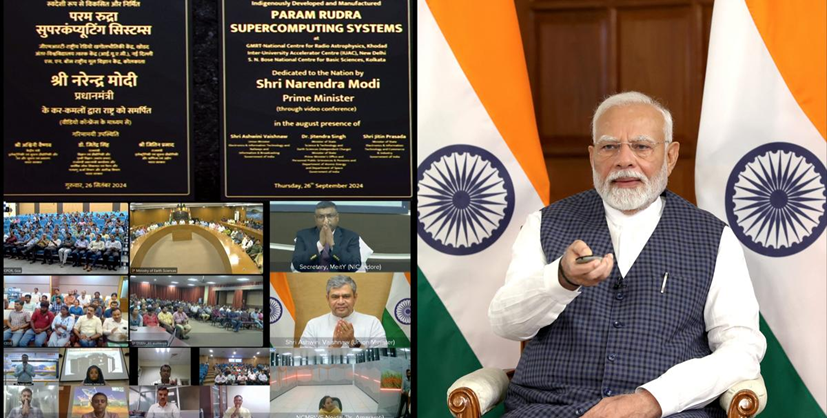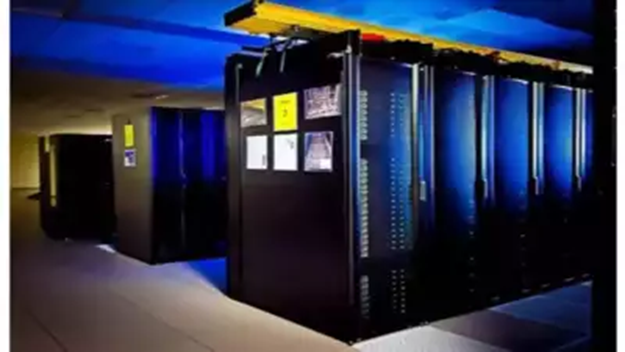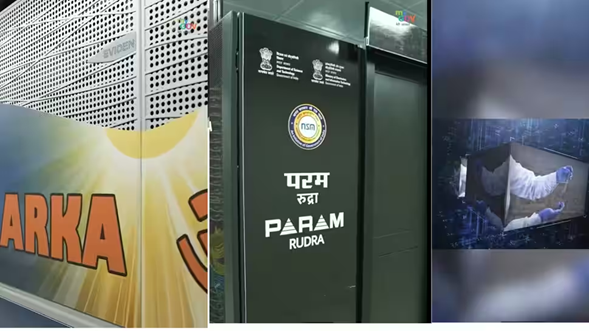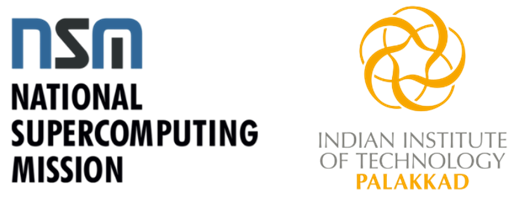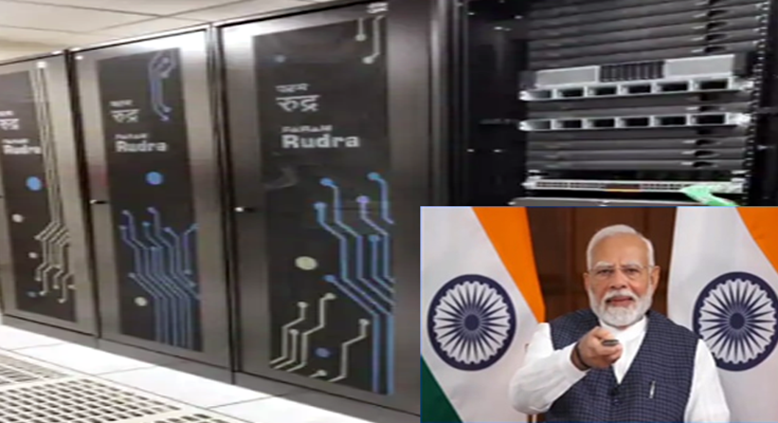Prime Minister Narendra Modi has inaugurated the Param Rudra Supercomputing System, marking a significant milestone in India’s journey towards technological advancement and self-reliance. India has taken a significant leap in scientific computing with the launch of three new PARAM Rudra Supercomputers, marking another milestone under the National Supercomputing Mission.
India’s New PARAM Rudra Supercomputers
Why In News
- Prime Minister Narendra Modi has inaugurated the Param Rudra Supercomputing System, marking a significant milestone in India’s journey towards technological advancement and self-reliance. India has taken a significant leap in scientific computing with the launch of three new PARAM Rudra Supercomputers, marking another milestone under the National Supercomputing Mission.
- The state-of-the-art facility, developed by the Centre for Development of Advanced Computing (C-DAC), represents a major boost to the country’s high-performance computing capabilities.
PARAM Rudra Supercomputers
- These supercomputers, developed indigenously at a cost of Rs 130 crore and dedicated to the nation by Prime Minister Narendra Modi, are strategically deployed across Delhi, Pune, and Kolkata to boost scientific research in areas like astronomy, material science, and earth sciences.
- “Whether it is the economy or ease of doing business or disaster management capacity or ease of living, there is no sector that is not directly dependent on technology and computing capabilities.
- This sector is the biggest foundation of India’s success in industry 4.0,” the prime minister said. He added that India building its own semiconductor ecosystem which will be an important part of the global supply chain.
What Are PARAM Rudra Supercomputers
- Param Rudra, named after the fierce avatar of Lord Shiva, is designed to tackle complex computational challenges across various scientific and engineering domains. Three Param Rudra supercomputers have been developed at Rs 130 crores, indigenously under the National Supercomputing Mission.
- PARAM Rudra Supercomputers are high-speed computational systems designed to support advanced research in fields such as:
- Astronomy: The Giant Metre Radio Telescope (GMRT) in Pune will use PARAM Rudra to study Fast Radio Bursts (FRBs) and other celestial phenomena.
- Material Science and Atomic Physics: The Inter-University Accelerator Centre (IUAC) in Delhi will leverage this technology for research in advanced materials and atomic interactions.
- Cosmology & Earth Sciences: At the SN Bose Centre in Kolkata, the supercomputer will support cutting-edge research in understanding the universe and our planet.
High-Performance Computing System
- Pune’s Giant Metre Radio Telescope (GMRT) will use the supercomputer to study Fast Radio Bursts (FRBs) and other astronomical events. In Delhi, the Inter-University Accelerator Centre (IUAC) will advance research in material science and atomic physics. Meanwhile, the S.N. Bose Centre in Kolkata will lead advanced studies in physics, cosmology, and earth sciences.
- Alongside Param Rudra, PM Modi also unveiled a specialised High-Performance Computing System dedicated to weather and climate research. This system is poised to revolutionize India’s meteorological forecasting capabilities, enabling more accurate predictions of weather patterns and climate trends.
- Named Arka and Arunika, these systems are expected to drastically improve India’s ability to predict critical weather events like cyclones and heat waves.
- Arunika and Arka will replace the existing high-power computing systems, Pratyush and Mihir, located at NCMRWF, Noida and IITM, Pune, respectively. With a combined processing power of 21.3 petaflops, they will greatly improve India’s capacity for weather modelling and climate forecasting.
- The supercomputing systems feature advanced liquid cooling technology and robust data storage, ensuring optimal performance and long-term efficiency.
National Supercomputing Mission
- As part of India’s push for Atmanirbhar Bharat (self-reliance) in technology, the National Supercomputing Mission (NSM) was launched in 2015 to develop state-of-the-art computing systems domestically.
- The NSM is a joint initiative by the Ministry of Electronics and Information Technology (MeitY) and the Department of Science and Technology (DST), implemented by the Centre for Development of Advanced Computing (C-DAC) and the Indian Institute of Science (IISc)
Conclusion
- The deployment of these advanced computing systems is expected to bolster India’s position in the global supercomputing arena. It will provide researchers and scientists with the tools needed to tackle pressing challenges in areas such as healthcare, renewable energy, and climate change mitigation.

